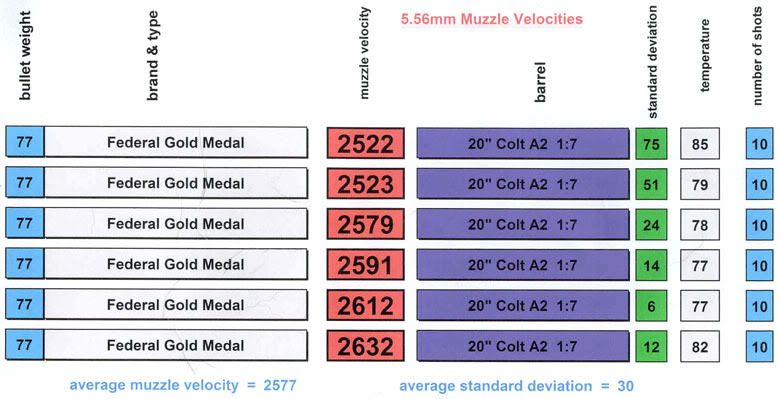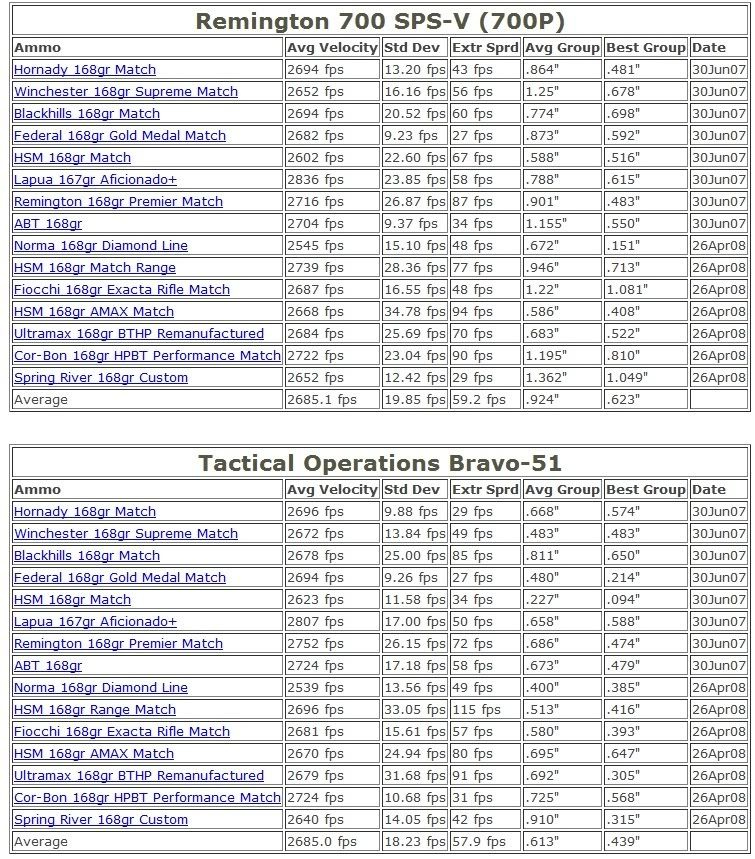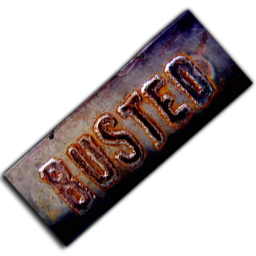Re: I think I just had an epiphany (bolt vs gas gun)
<div class="ubbcode-block"><div class="ubbcode-header">Originally Posted By: JCC135</div><div class="ubbcode-body">I don't have a gas gun so I have no data. I am curious as to whether or not the variation in muzzle velocity for an AR is generally larger or smaller than a bolt action in the same caliber with as similar a configuration as possible. If the variation in muzzle velocity is very close to the same then I think you have to go look at other differences to get a handle on the original question in the thread.
Responding to the second post about high speed filming. It might not be necessary to film the process to answer the question. An optical sensor at the end of the barrel to detect the passage of the bullet, and an electrical contact on the bolt that opens when the bolt moves could show the same thing. You would need something like a digital oscilloscope to capture the signals, but it wouldn't have to be a high end scope. It's the kind of equipment you could find in a good high school or college electronics lab.
Please excuse my ignorance, but what exactly is meant by a "striker fired system" and how would it differ from the existing firing mechanism on an AR?</div></div>
Molon did some ammo tests on AR15s. I initially thought M4 feedramps would cause inconsistencies (due to the rounds hitting a steeper surface) in OAL, thus causing changes in pressure. Now that claim seems invalid.
However, the inverse is seen with MK318 Mod 0 ammo. This is not match grade ammo, but is frangible ammo with a larger opening.
And it's also interesting to see the consistency of 77gr.223 FGMM over the years.
Here is some data gathered from a pair of .308 bolt guns on
Sniper Central.
Based off of this, I wouldn't say consistency in muzzle velocity is a function of precision. Some of the ammo with the greatest variances have the best accuracy, notably, HSM 168gr Range Match.
To answer your question about the fire control systems, bolt guns use a striker fired system. The firing pin gets is cocked and held back via spring tension and the trigger sear releases it so that it directly strikes the primer on a cartridge. ARs and most semi-autos on the other hand use hammer fired trigger systems. The hammer gets cocked back and swings a good distance to hit the firing pin, which then strikes the primer on the cartridge. Many believe that the extra time that it takes for all of these actions to occur allows shooters to move more before the bullet exits the barrel. So basically, if you're not able to hold your entire body still for the extended duration of the firing process on a gas gun, your groups will be wider than they would be on a bolt gun of equal mechanical accuracy.
<div class="ubbcode-block"><div class="ubbcode-header">Originally Posted By: rideHPD</div><div class="ubbcode-body">A big thing I would say here is that you won't really see the recoil from the round affect the movement of the gun because of the relative masses of the projectile, gas, and rifle and the momentum and impulse transfers. The majority of the recoil of a rifle if I ran the simulator correctly comes from the free expansion of the gas as the bullet leaves the muzzle, where the gas accelerates very rapidly from the MV of the bullet to several times faster. This process occurs over the duration of a fraction of a second. <span style="color: #FF0000">Lowlight has precisely the right idea here in that any unbalanced force on the gun that is masked by static friction with be exploited by the rifle.</span> Because of this human error you will almost certainly never see any real improvement in trying to bring a semi-auto closer to a bolt gun, no matter what you do, because of the sheer fact that it is vastly outweighed by discrepancies in technique from shot to shot. Reducing that impulse time during which you can affect the shot is actually probably the most effective thing you can do, assuming you have a good barrel and smooth trigger(+things that help you do your part right) and have reasonably tight tolerances for every other part of the gun. I wonder if adding the resistance to the firing pin from having to depress a primer instead of falling on a dry chamber during dry fire changes how we shoot by influencing trigger follow-through and therefore introducing play in the system during vibration.</div></div>
Can you rephrase that sentence? I don't quite follow what you're saying.
It seems like you agree with me that the shooter is more to blame for poor gas gun precision and that something to mitigate shooter error will yield better results than increasing the inherent accuracy of a gas gun.











